| sts-5024_mid-term_mfb.pdf |
|
For the mid-term this semester we selected two topics from among six. I wrote these in reverse order. The first to appear was actually the second I wrote, and was rushed in the process. I think it shows.
0 Comments
My wife and I recently drove south to Georgia to spend Thanksgiving week with our daughter Kyra and her family. Like several of our children, Kyra is a certified SCUBA diver, but has not done much diving since her certification. She and I made a side trip to north Florida to go diving in a popular diving spring known as The Blue Grotto. It’s not far from where our nephew lives with his family so we were able to visit with them for a night. We got a short night dive that Friday, then two dives on Saturday before driving back to Georgia.
One of my church responsibilities is to work with the Stake Young Women President on stake sponsored youth activities. The activity planned last month was a movie night. I got the assignment to make sure all the tech was set up and working. I got word there is a portable large screen in the stake building. I called a brother I know in Aquia Ward to see if he knew anything about it. He described where he thought the screen is stored. Unfortunately to get to it required getting into the building. I have keys for a closet in the building, but not to the building itself. In the mean time I was scanning the Internet looking for screens to buy as an alternative, but for one reason or another never hit the add-to-cart button. While wondering how to resolve the screen-need issue I decided to check my personal email. In it I found a note from Brother Zappe of the Garrisonville Ward. He is the Stake Executive Secretary. He sent me a personal code to give me access to the building. I had not reached out to him with a request. As a result I sent him this email: Thank you! Perfect timing. You seem to be listening to the Spirit. I was just considering how I could get in to find and inspect the large projection screen we will need for the next stake youth activity. Brother Gillespie told me about it and where it is, but I had no way into the building. Here is the response I got from him: Great!! Well, likely the case. I was sitting here and it popped into my head that I need to issue the remainder of the codes. Glad it worked out! As we celebrate the Thanksgiving season and I think what I am thankful for, I am thankful that Heavenly Father is involved in the details of the individual life of each of us. I’m grateful for the influence of the Spirit. I’m comforted to see others who are paying attention to moments of inspiration and acting on those promptings. I hope each of us has experiences of similar note. Always act on them. I know in today’s culture being a ‘tool’ is thought of as a negative, but for me purposely being a tool of Heavenly Father is a goal. It’s His work. We can be a tool in His hands for the blessing of others. Autumn has definitely arrived here in Virginia. October brought us cooler, wetter weather. It brings with it anticipation for costumes and candy to many. It also brings renewed church attendance. In this area we have been able to slowly return to church services. Before General Conference the wards were meeting on a rotational basis and in small groups. The Aquia Ward which we attend was meeting every third week with multiple sessions of Sacrament limited to 25 people at a time. Under those circumstances I was able to visit units in my capacity in the Stake High Council.
In October we enjoyed general conference. What a joy, and so many specific and inspired messages directly applicable to the current world experience. At the same time, beginning October 1, the Virginia meeting restrictions have been loosened by state government. As a result we were all able to attend sacrament meeting together again in one body. Masks, social distancing, and a limit to just one meeting were the rule, nevertheless it’s clear coming together is a blessing. I spoke at the Accokeek Ward. Bishop Bracero asked me to think about member-missionary work from the idea of what general conference message I would advise us to share with others. I immediately thought of President M. Russel Ballard. I’ve always liked his approach to speaking; direct and clear messages. I first heard him when he was serving in the First Quorum of Seventy. I was on my mission in southern Spain. His daughter was serving there as well. As she finished her time of service, Elder Ballard and his wife came to Spain. He was giving conferences across Europe on assignment. They timed it so as to be able to take their daughter with them on the tour before heading back home. As it turns out his recent conference talk not only drew me because of the speaker, but because of the topic. It’s titled Watch Ye Therefore, and Pray Always. While setting personal goals this past year I decided to use the youth program approach. I divided goals in the areas of spiritual, social, physical, and intellectual. Among my spiritual goals I wrote, “Have more meaningful private prayer.” Before work shifted my efforts from office to home-office my schedule was quite overbooked. My morning prayer was something that tended to happen while riding the train into Washington DC each day. Evening prayer was less steady and often didn’t happen until I was pretty much exhausted from the day, if it happened at all. With this goal in mind I did become more focused before the pandemic. With all the changes I still have a heavy load to carry each day. Despite this, my schedule leaves me with more flexibility and privacy than I would in the public or office arena. In his talk, President Ballard shares the following words from the Savior: Luke 21:36 36 Watch ye therefore, and pray always, that ye may be accounted worthy to escape all these things that shall come to pass, and to stand before the Son of man. I can’t speak for others, but as I watch all the anger, fear, discouragement, and economic distress going on around me, I’m able to count my blessings as I speak with Heavenly Father. President Ballard speaks to our own prayer in this way. “I think often of those of you who are suffering, worried, afraid, or feeling alone. I assure each one of you that the Lord knows you, that He is aware of your concern and anguish, and that He loves you—intimately, personally, deeply, and forever.” To the speaking topic assignment Bishop Bracero gave me, I think the best thing we can do is to encourage others likewise to pray. Again from President Ballard, “Today I expand my call for prayer to all people from every country around the world. No matter how you pray or to whom you pray, please exercise your faith—whatever your faith may be—and pray for your country and for your national leaders.” I firmly believe that if an individual approaches God from where ever they are today, He will lead them closer to truth. Approaching truth will inevitably lead people in one way or another toward the Gospel. President Ballard also shared, “During the past few months I have had the impression come to me that the best way to help the current world situation is for all people to rely more fully upon God and to turn their hearts to Him through sincere prayer. Humbling ourselves and seeking heaven’s inspiration to endure or conquer what is before us will be our safest and surest way to move confidently forward through these troubling times.” It’s easy to get pulled into judging and allowing ourselves to be angered. As we note how far away we judge others to be from our own way of thinking, do we seek some form of justice to them, or do we seek for them to find the same peace we seek for ourselves? Again from President Ballard’s talk: Matthew 5:44 44 But I say unto you, Love your enemies, bless them that curse you, do good to them that hate you, and pray for them which despitefully use you, and persecute you; Praying for a change of heart in others should be accompanied by a prayer for our own change of heart that we might be more in tune with His will, and more accepting of His will over our own. President Ballard points out how the Savior prayed, then He went about doing good: Acts 10:38 38 How God anointed Jesus of Nazareth with the Holy Ghost and with power: who went about doing good, and healing all that were oppressed of the devil; for God was with him. May we follow the Lord’s example. Let’s pray for others, let’s encourage others to pray. Let’s go about doing good. It’s the beginning of autumn. School has started up again, including seminary. Michelle has been called as a seminary teacher. She has had this calling a number of times in the past, in a number of different states. This year things are different as you might guess. In our stake, seminary is currently a virtual synchronous activity. They are using Zoom. In order to make the audio work better for her we invested in a nice set of headphones with a microphone built in. At the time we bought them the local Best Buy really only had the kind designed for online gamers. So now she sits in our living room, a little old lady, talking with teens as she communicates with them through a cool headset some of them wish they had. It’s funny to think about, sort of like that Beach Boys song, The Little Old Lady from Pasadena who is known for driving a hot-rod car.
In the past few weeks my Book of Mormon study has led me through the early parts of 3 Nephi. In particular my thoughts have dwelt some on the portion of events that happened immediately following the atonement and resurrection of Jesus in Jerusalem. Among the Nephite and Lamanite people what followed were three hours of destruction, then three days of darkness. In the midst of the darkness, the voice of the Lord was heard with a number of messages. In particular these stood out to me: 3 Nephi 6: 13 & 15 13. Some were lifted up in pride, and others were exceedingly humble; some did return railing for railing, while others would receive railing and persecution and all manner of afflictions, and would not turn and revile again, but were humble and penitent before God. AND 15. Now the cause of this iniquity of the people was this—Satan had great power, unto the stirring up of the people to do all manner of iniquity, and to the puffing them up with pride, tempting them to seek for power, and authority, and riches, and the vain things of the world. As I reviewed these words I could not help being reminded of images of violence and vitriol we see constantly splashed on our screens these days within our country. It saddens my heart, but also makes me wonder. If I were personally attacked would I return railing for railing? There have certainly been times in the past when I would have with little thought. Even now when looking at current events and listening to how so much of what I hear seems disingenuous, it is hard not to become angered at how off track so many people seem to be. I firmly believe in the adage “by their fruit ye shall know them.” Sadly, by the fruit of what I see there appears to be so much negativity in the hearts of so many. Late last week I was listening to a talk entitled Fulfillment of Prophecy, by Elder Ronald A. Rasband, given in the most recent (April 2020) general conference. Quoting Joseph Smith, he said, “No unhallowed hand can stop the work from progressing; persecutions may rage, mobs may combine, armies may assemble, calumny may defame, but the truth of God will go forth boldly, nobly, and independent, till it has penetrated every continent, visited every clime, swept every country, and sounded in every ear, till the purposes of God shall be accomplished, and the Great Jehovah shall say the work is done.” For me, standing firm in the faith of the Savior is the antidote to the fear and anger that is growing in the world. May we find and share comfort through our faith. July brought our family a momentous event. We took a week to join together at Yellowstone National Park. My wife and I enjoyed spending an entire week with all our children, their spouses, and most especially our ten grandchildren. We rented a vacation home in Island Park, Idaho which is about a 20-minute drive from the west entrance to the park.
Each day we enjoyed games, visiting the park, meals together, and family prayers. We had full-blown family meals as well. Most of the time was organized chaos. A few evenings we enjoyed sitting around the fire pit outside, and cooking hot dogs and s’mores. Several good conversations happened then as well. One of the highlights came on Sunday. Our son Jacob and his wife Kanneisha recently welcomed their first child into their home, Lucy Paulene Beach. Their bishop gave permission for us to hold the baby blessing at the cabin with Melchizedek priesthood holders joining the blessing circle. Some of Kanneisha’s family traveled up from Logan, Utah to join us for the blessing as well. Outside of visiting the park each day we scheduled one afternoon for a group horse ride on a nearby ranch. Another day we drove up to Gardiner, Montana to take a two-hour whitewater rafting ride. These side trips were lots of fun. My wife and I were happy to find a way to make all this happen financially. We plan these reunions every third summer. We do it at this interval to give our children a summer with their in-laws and one on their own should they choose that approach. The reason we put so much emphasis on this is that we believe strongly that giving our family experiences is much more important than giving them stuff. We also get to see the solidarity and love within our extended family. We believe these memories will bring more strength to all of us in times of difficulty. Knowing we have others who care and will be there for us whenever we wrestle with difficult life moments brings some peace. These events also give us an opportunity to share direct testimony. Though we did not make a formal arrangement for sharing testimonies, there were a number of them shared in various settings with groups larger and smaller throughout the week. Three specific thoughts come to me from the family proclamation in connection with our week together.
Below is a synthesis short writing given at the end of a class I took on Philosophy of Science and Technology:
Argumentative Claim: Truth exists, but our understanding of it is an approximation. Justification: Newton conjectured existence of the ‘all-pervading aether’ (Ian Hacking, Representing and Intervening, 254). Hacking shows how for centuries many scientists held the existence of the substance. With this basic premise they were able to explain many phenomena, at least in part. The idea more or less gave up the ghost when Einstein’s relativity was generally adopted by the scientific community. That didn’t happen immediately. Interestingly, calculation such as those published by Maxwell were referenced by both Newtonians and Einstein. This points to Hacking’s idea that calculation acts as a bridge between speculation and experiment. Then why did most scientists make the shift from Newton to Einstein? Thomas Kuhn would argue either could be justified as a paradigm suggesting relativity would eventually be supplanted by something newer, not necessarily truer. If one ascribes to Kuhn’s argument taken to extreme, then the existence of truth itself is in question. Kuhn might be accused of “ever learning, and never able to come to the knowledge of the truth” (2 Timothy 3:7, New Testament). Describing skepticism, Baggini and Fosl point to a need for ‘criterion of truth’ (The Philosopher's Toolkit, 126). One could make the argument that such an approach makes truth relative to criteria. Who decides which criteria matter? Calculation and experimentation ultimately lead to a level of probability of truth. Hacking argues experiments fill theoretical blanks (Representing and Intervening, 239). That only improves theoretical probability, what Nancy Cartwright calls an approximation of truth (Representing and Intervening, 218). I would argue one must adopt one’s own criteria for truth. These criteria are what might be considered accepted basic principles. To maintain belief in a principle such as truth exists independent of man’s discovery or invention, a principle I personally hold, one must consider alternatives that introduce some level of doubt. Alternatives will have some logic, and likely some level of experimentation. To maintain confidence in the basic principle requires at least a rough understanding of the probabilistic comparison of the conflicting ideas, and a willingness to adjust if the probability of the alternate rises in comparison over time. Despite shifting probabilities, one must remember that either or both alternative principles may be wrong, and be comfortable living with some level of doubt.
Adjustment. Flexibility. Willingness to change. These and similar phrases are becoming more familiar than ever before. I’m impressed with how so many people have been able not only to adjust to restrictions, but have found ways to be at least as productive, if not more so, then before. At work I am interacting with more people than usual. For example, in the past we would put on a meeting we call a ‘brown bag’. The idea is some specific topic gets discussed over whatever lunch you bring with you, like in a (figurative) brown paper bag. Pre-pandemic, we tended to do them about once a month in our division. We might get something like 50% attendance. Since the pandemic, we’ve moved these meetings to every two weeks (remote of course), and our attendance went up to something like 80%, holding there pretty much every meeting.
A similar phenomena is happening in our church priesthood quorum meetings. Every two weeks on Sunday our ward holds this meeting over Zoom. When we met face-to-face it would be normal for maybe 10 brethren to attend. Now we routinely see something like double that. Granted, some of those brothers are normally acting in callings that keep them from attending, but even accounting for that we see the improvement. Family history work is an obvious church-related activity that can benefit from more people at home on their computers. Recently, my wife and I participated in a new way. There is an Internet site called Billion Graves where you go to a cemetery not yet uploaded, snap a picture of each headstone linked to your GPS position, then go online and transcribe the information into a form. Most of the popular family history apps (including the church sites) have access to the picture and transcribed data. It was fun. We were able to upload pictures of 75 grave markers from Peoples Union Baptist Church in King George, VA. The other church-related activity that has to be done different is missionary work. I have been thinking about my days as a full-time missionary in 1982 and 1983. Like many others, until lately, missionary work for us involved being among people. Whether in a home, at church, or on the street, missionary work was all about direct contact with others. I’ve been watching the missionaries assigned here in our ward. They are frustrated, I’m sure, with having to exercise social distancing. Despite that, they are not letting it get in the way of fishers-of-men work. The mission has established a Facebook site, Followers of Christ in Stafford, which invites engagement with people who show an interest in the topic. Members of the stake are adding testimonies, videos, and other kinds of info to assist the missionaries to share content with those investigating. Our ward is having success with it. The teaching pool, though remote, continues to stay full, and investigators are joining the church in our ward. I know that had similar circumstances come about when I was a young missionary back in the day, this adjustment would likely have been discouraging to me. If our elders are feeling discouraged, they don’t show it. They are certainly exercising faith and succeeding at finding the elect of God who are ready now to accept the Gospel. I hope whatever approach our life’s work is employing, we are able to avoid discouragement and continue to exercise faith. Events continue to change as you are quite aware, both on the global and the local. In the area known as the DMV (DC, MD, VA) a combination of escalating orders have come from government officials and employers as the threat of COVID infections grows. As a result, my wife and I are both home. I work remotely, but I have a 24/7 operations center that cannot run fully remote without serious impact to distribution of public radio content throughout America. The DMV by-and-large have closed schools for the rest of the school year (though online assignments continue for students). Non-essential businesses are by-and-large closed putting lots of people out of work. Stay-at-home orders have been issued. For us that means we should stay home as much as possible, but it is fine to go to the store, order takeout food, pick up medications, etc. In VA there is not any real enforcement. Nobody is getting arrested or fined that I have heard of. So I work remote, get inside and outside projects done around the house, and dress more comfortably. Early in April was General Conference for the church. It was certainly memorable as had been promised by the prophet six months ago. Everything was remote. There were no congregates onsite where the discourses were given. Everyone attended virtually, at home, through technology. That said, the Spirit was still strong. Because of the 200th anniversary of the first vision, when Joseph the prophet first saw God the Father, and His son Jesus Christ, we all participated in a solemn assembly which included the hosanna shout, usually reserved for temple dedicatory services. As seems so common these days, more temple construction notices were given. Michelle and I discussed a number of the messages we heard, and shared times when we each particularly felt the Spirit touch our hearts. The next day, was my birthday. I got some birthday fun when I could open and install a new docking station for my Surface tablet. The tablet only has one USB port. With the docking station I can attach multiple devices through the single port. So far I have added my digital microphone/headset, and an external hard drive. Eventually I’ll add a keyboard/mouse, and large monitor. The other desk in our little home office has been cleared away and I’m able to actually use it for work, while I use the smaller desk with our old tower computer set up for things like typing this posting. Thanks to all of you who were able to reach out with birthday well wishes. Other than setting up the new toy, the rest of my birthday was pretty heavily booked with meetings, including several that I played a leadership role in. My evening was taken up attending a class I’m enrolled in as part of my post-graduate work at Virginia Tech. There were two groups presenting last night, and my group was one of those. No rest for the weary I guess. As the prophet asked, we participated in a global fast the Sunday before general conference. He asked us to do it again the following Friday (10 Apr), so we did. I’ve always found fasting a strengthening process. Aside from the standard approach of monthly fasting on the first Sunday of the month, I have found fasting at additional times for specific reasons a fruitful tool for me. I hope you are able to bring some good out of the challenging times we live in. Let go of any fear and have confidence in Heavenly Father. The arrival of March brought with it more comfortable weather. For the first time in a long time I was able to wander around outside without a sweater or jacket. Flowers were up. The frogs in the swamp at the bottom of our road got very loud. Our fruit trees had small leaves emerging. I became ready mentally to get some outside work done around the house. You might think it strange, but I consider that sort of thing as my therapy. It’s much cheaper than the professional sort, and probably more effective.
This spring has brought something new with it in the form of the COVID-19 (corona) virus. Our son Matthew lives in northern Italy. His area was quarantined early. He could still go to work each day, and make some trips around the area (shopping, etc.), but he couldn't, and still can’t, leave the country, or even drive to other parts of Italy. Jacob, and his family live in Bellingham, WA. That’s just north of Seattle, another hotspot for the virus. So far there have not be so drastic actions there as Matthew has experienced in Italy. Here in DC cases have been diagnosed so we’ll see what sort of effects it will make in our life. The main effect for us so far has just been policy changes at my work. Several trips I had planned are now cancelled, and we are prepping for the possibility of a significant portion of our staff being unavailable to work. Many can work from home, but others can’t. If they are sick they can’t work even if work from home is an option. Before stay-at-home orders came to our area I was busy with a lot of church obligations. Stake High Council meetings, ward activities, and the like. One Saturday night in March I helped set up the sound system for the youth dance, conducted the Stake AP and YW Committee meeting, and then chaperoned at the dance. That’s a late night for an old guy like me. That same Saturday night was the shift to daylight savings time so we lost an hour of sleep. Next morning I had to get up early to participate in the King George ward conference. On the way home from that event I pulled off the side of the rode to snap some picks of an old house that is slowly succumbing to encroaching nature. The day didn’t end there. In the afternoon I attended the Rising Generation meeting at Bishop Johnson’s house. That’s a monthly meeting the stake sponsors during the school year for graduating high school seniors. Finally my wife and I finished up our evening with a ministering visit to one of our families. It makes me tired just thinking about it all. This is how people get gray hair and bad knees! Prior to general conference President Nelson challenged us all to consider the words of Heavenly Father when he encouraged Joseph Smith, and others in the scriptures, to ‘Hear Him’. He was of course referring to the Savior. This has been a topic I’ve been considering for some time now. How does one have a personal relationship with Jesus Christ? I felt for some time this was a puzzle. For example I pray to Heavenly Father and receive answers through the Holy Ghost. In this way I felt like I can have a direct relationship through direct interaction with two members of the Godhead. The role of Jesus Christ as my mediator is of course important, even critical, but that would make my relationship with him more indirect. Back then, after a few months of focused study I came to the conclusion, and felt a confirmation through the Spirit, that I have a direct relationship with Him when I repent and feel the healing power of the Atonement. That really helped and has built my testimony. Fast forward to President Nelson’s challenge. How do I ‘hear Him’? As part of my normal routine, while riding the train into Washington DC every day I spend some time praying, then reading for school. As I approach the city I put up my reading, put on my ear buds, and listen to a chapter of the Book of Mormon, followed by other audio. A few weeks into the invitation by the prophet I was listening to 2 Nephi 27. I heard the following in verse 23: “For behold, I am God; and I am a God of miracles; and I will show unto the world that I am the same yesterday, today, and forever; and I work not among the children of men save it be according to their faith.” It quickly came to me that in this verse were the words of the Savior being quoted to us by the prophet Nephi. Because I was listening to the words through technology, I was literally hearing Him. My direct relationship with Jesus Christ could come, at least, through listening (literally or figuratively) to His words as they come to us in the scriptures. What a blessing! There are so many competing ideas in the world. I am deeply studying many topics around the disciplines of science and technology. This semester approaches these topics from the angle of philosophy. I’m thankful for a measure of truth I can use with which to gauge other ideas. Confirmation by the Spirit trumps all logical debate, especially since most of the debate finds no real agreement even among the scholars who advance their respective areas of study. As the world begins to consider and fear an advancing virus, we can find peace knowing such challenges, though concerning, are but temporary. Despite quarantines and travel restrictions, we can find joy in the positives of life. Believe me, I have seen some of the worst this world has to offer. I understand how so many people can despair, or at least feel discouraged. I encourage each of us to follow the words of the prophet and ‘hear Him.’ I find the psychology of what things stand firm in my mind from my time growing up as a kid puzzling some days. Back in early February I was particularly reminded of the classic Bugs Bunny episode when Elmer Fudd was out hunting. Bugs and Daffy Duck tried to point Elmer toward each other. Over and over Daffy would claim it was ‘wabbit season’, then Bugs would say ‘duck season’. As the pace of the argument grew, Bugs would shift sides. Daffy would follow suit yelling “Duck season! Fire!” Then Elmer would give Daffy a face full of buckshot. Daffy then looked at Bugs, and with his classic lisp would say, “You’re despicable!”
Why did this silly Saturday morning cartoon come to mind? In February we celebrated the birthday of our son, Matt. We also celebrated Groundhog’s Day when Punxsutawney Phil decided spring was just around the corner. After Phil made his annual prediction another season showed up… TAX season! I sort of see this season much like Daffy sees duck season. I spent much of an entire Saturday filling out forms online, digging out the pertinent documents, and sifting through a full year’s worth of receipts. All that effort left me with about half-a-trash-bag-full of paper that required shredding. The shredding effort took several weeks here and there. Aside from tax season, February is the time of year when it’s still too cold to get much enjoyment outside without snow to play in. I was quite ready to get going on yard work, jogging on the ground instead of the treadmill, getting back into a boat of some kind, and riding on bike paths. Don’t get me wrong. Winter is a good reading season, but I’d much rather read next to a fire in our fire pit in the yard than be sitting on the couch inside. I also ride my motorcycle to DC once a week because of an evening class I’m taking. I have the right gear to stay warm as I ride, but it’s just extra work to put it all on before leaving, then taking it all off when arriving that makes the experience less enticing. I do have some saving graces in late winter. As I mentioned it was Matt’s birthday in Feb. It was also the birthday of our twins, Jake and Emily. Our son-in-law Ryan is also a birthday boy this month. I’m likely missing someone else. I haven’t gotten them all on my calendar. In addition, I’m in charge of the stake Aaronic Priesthood (young men age 11-18) encampment this summer, so worked with others as we planned (and continue to) for a week-long fun time in June for about 200 people. It’s got me thinking about (and buying gear for) summer activities. My faithful old .22 rifle is laying on the floor next to me in our home office, even as I am typing this. I got it out recently to check out its condition for use in June. One Sunday in mid-February I noticed a few of the earliest forest wildflowers beginning to poke out of the ground, and there were small green buds forming on the lilac bushes on either side of our driveway. Although it was chilly outside, the sun was bright, and the sky was blue after a week of mostly gray and rain. Although my nature in late winter is to be a little gloomy, I decided to actively push myself to look for the positives. Even if spring had not yet sprung, the warm months were just around the corner. As much as I don’t like tax season, I do look forward to the tax return that eventually came our way in just a few weeks after the pain was over. I suppose a little pain, some negativity, in life is required to make the sweet that much better. Just as Adam and Eve gained understanding through transgression and expulsion from Eden, we all need to recognize and appreciate our own Edens by feeling some distance from them at times. I just wanted to make a quick capture of a small moment from this morning. I’ve been dealing with my fair share of stress the past few weeks, some self-imposed. I believe in and have often experienced little nods from Deity to remind me I am known and loved. After stepping off the train I finished listening to some content then opened up Facebook. I’m not necessarily all that big of a fan of the app, but when I looked earlier someone had posted a video from back in 2016, though it seems there are versions as early as 2012. It is of an orchestra staging a ‘flash mob’ playing the Ode de Joy theme in Beethoven Symphony No. 9. It struck just the right message for me. The specific music was a piece I used to listen too often while training for ultra-marathons back in my 30s. The tempo made just the right pace for my style of running back then. Also, the video showed all these people in the street watching with surprise and appreciation. Children in the video seemed mesmerized by the whole spectacle. I felt better, even renewed, and able to face what turned out to be a very hectic morning at work. On the train this morning I had been reading about Soren Kierkegaard’s concepts of ‘indirect communication’ noting how some things can be said, but other things can only be shown. Music (whatever sort one chooses to listen to) certainly communicates something that cannot really be spoken. It inspired those in the video to smile, and dance joyously. For me it may have momentarily brought out a small tear of gratitude. This year my wife and I traveled to Utah to spend time with family for Christmas. It was fun opening presents, eating too much food, playing games, and getting in a ski day with our son Jacob. We also saw two movies, the next installments of Star Wars and Jumanji.
Before we left for Utah the wonderful missionaries serving in our congregation here in Virginia shared this year’s nativity video. This is a powerful tool to convey the Spirit. I was particularly peaked by the Spirit at the moment of His birth, again as the shepherds saw the angels, and one last time as one of the wise men first sees the star appearing in the sky. I shared the link to the video on my Facebook page. I hope it helped someone. An interesting note, I have a particular interest in navigation. In the video the wise men use a specific tool to check their position relative to the north star. At first I erroneously thought they were using the device in reference to the new star. I didn’t recognize it so I consulted Google. The device is called a Kamal. In the video the Magi put one end of the chain in his mouth. He held up a rectangular card attached to the other end of the chain to gain a position. How it is used is explained on the website Online Star Register: The Kamal was composed of a wood or horn parallelogram one inch by two inches long. Strings were inserted through the center. The string composed of knots at different points along its length. Each knot, called an isba, equaled one degree 36 minutes. The knots ranged from 1 to 16 isba. The navigator would put one of the knots between his teeth and hold the Kamal at arm’s length. When the upper and lower edges of the device became coincident with the pole star and the horizon, the navigator knew his latitude was correct. The latitude of different ports corresponded to the position of particular knots on the string. One other point that came out as my wife and I discussed the Come, Follow Me topic in the car on the way to Utah. Although the star was a sign the Messiah was born and helped guide them to Jerusalem, it did not light directly over the manger in Bethlehem (contrary to popular depictions). The wise men had to seek out Harod’s scholars who in turn had to dig around through the records to find the name of the town. The video points out that their visit was much later, after Christ was more of a toddler than a baby. By that point they were no longer living in a barn. So the wise men first had to have studied over years to know the sign and to understand basic astronomy. Then they had to be diligent in watching for the sign. Then they had to be willing to follow the sign. Despite that, they still had to consult scripture to know of his location. Then once close they had to ask the townspeople to point to the specific house. Is that not unlike our efforts to seek Him as well? One final note. This year was the first we celebrated Christmas without our mothers. They both passed away last year within three weeks of each other. As we were traveling home we noted how this year just didn’t feel like Christmas. Not all of our family could be there, but that is always true. However, of our parents, only her father is still with us. Despite the games, presents, family and all the rest, without our mothers it just wasn’t the same. A few weeks ago a few of us at my office managed to visit the DC car show. Looking at the cars was nice, but we were more focused on the dashboards… and the maybe the collector cars on the top floor. There were three floors of cars with pretty much every manufacturer represented. I compiled the data we collected and here is what we learned. There were 26 automakers and we looked at some cars from each. We collectively reviewed 57 models. If I had to guess, I’d say there were close to 200 models shown. Most of the manufacturers used either the same dashboard head-unit (entertainment system) in each model, or had a basic and premium version split among all their models. One exception was Toyota. The rep I happened to speak to at the Toyota booth noted that each factory made independent decisions about which head-unit to deploy. As a result, the Toyota models were all over the map in terms of dashboard implementations from model to model. Voice Command Every model of every maker had voice command. They tended to be activated by a button on the steering wheel. Physical Radio Selection Button About 35% of the cars actually had a button separate from the touch screen that actually had the word ‘radio’ written on it. Pushing the button automatically brought up the radio controls on the touchscreen and switched audio to whatever station was tuned in. Almost all of the cars had physical buttons outside of the touch screen to control the radio such as power, volume and tuning. Many of the cars (we didn’t count these, but I’d guess it to be around half) had a physical button that said either ‘audio’ or ‘media’. These would bring up a menu on the touch screen for all audio sources including radio. Radio Icon on the Top Tier By this we mean when you select the primary button to orient the system, usually called ‘Home’, we were looking to see if the radio system was listed as an option. Like the physical button version, about 35% did this. Pretty much all the rest had an icon that said something like ‘audio’ or ‘media’ in which the radio was then one of a number of audio sources available. We would refer to this as second tier, but at least in those cases radio was on equal footing with all other audio sources. Carplay/Auto Exclude Radio This refers to an experience we had at the 2018 CES when there was one model with this approach. In that case when you plugged your phone into the car either Apple Carplay or Android Auto would come up, and all other audio options were grayed out and not available unless you unplugged the phone. Luckily, the car folks have seen how this might make their buyers unhappy. Not one car did that this time. About 50% of the cars would mute radio and switch away to Carplay or Auto, but you could navigate back to the radio source with no problem. The other 50% brought up the apps, but kept playing the radio until you selected to use the app instead. Both AM and FM
This question was also a holdover from the earlier CES when we saw a fairly large percentage of the electric cars that did not have an AM tuner in them. This year that was less true. A full 96% of the models we looked at included tuners for both bands. The concern for AM in electric cars is the interference generated by the electric motor, but it’s clear they are willing to spend the small amount it costs to shield the AM radio. Perhaps they got some negative feedback from car buyers. HD Radio We looked to see how many offered this option. Of the cars we looked at, 86% had the capability. This bodes well for applications such as Metapub. It’s not clear how many of these systems included HD Radio as a standard vs an option, but it was so prevalent that it’s likely it was standard. It was difficult to tell in some cases how metadata was handled. If a car had HD Radio in all cases it at least displayed RDS text and HD text. What was more difficult to confirm was the presence or non-presence of Artist Experience, meaning graphics in HD Radio. In order to confirm it we had to tune to stations we knew were transmitting graphics, then wait to see if the broadcast signal was strong enough to receive it. This was more of a challenge in the basement than on the main floor, but was still a bit of a science project either way. There were only 6 models that seemed to have RDS only. One model (Acura RLX) didn’t have any sort of metadata. All the rest did display metadata both in RDS and HD modes, though with the caveats on graphics mentioned above. For Christmas we visited family in Utah. Our daughter Kyra and her family weren’t able to be there so we took the time at Thanksgiving to visit them.
The weather in Georgia was much nicer than here in Virginia, a good ten degrees warmer. We did all the normal holiday things. We all ate too much. The grandchildren played in the fallen leaves. Friday night we put up a tent, sat around the large fire pit and camped out for the night. I brought along some fireworks like I sometimes do. The kids always like the racket that makes. There were some minor home repairs to take care of. It’s an old house so there is always something to do to it. Watching the Macy’s parade was fun too. It was apparently windy in New York City so they were not sure if the big character balloons would fly. In the end they just held the balloons closer to the ground to better keep them under control. On Sunday we were able to attend church in our old ward, the Stockbridge Ward. It was fun to see some of our friends who we’ve known for years. We lived in Georgia for eight years. We’ve now been in Virginia for five and a half years. Every time we visit we get the question about when we are moving back to Georgia. I suppose they ask because we still own our home there. That will only be true for another three years or so. Our plan is to retire when I turn 60, then go serve a church mission as a couple. We’ll see how that all works out. For us to do that we will need to sell our Georgia home. Earlier in November I had an unusual church assignment. I was the High Council speaker at the Stafford Branch. What is unusual about it is that it is an all-Spanish unit. I was able to meet with branch leaders before church, then speak and attend meetings using my Spanish. I hope the members were able to understand my message, and more importantly, feel the Spirit. The theme, of course, was about being thankful. One of the references was a talk by President Monson in the October 2010 conference, The Devine Gift of Gratitude. The other reference was Luke 17 and the story of the ten lepers. I thought about what to say all week. The main ideas finally came on Saturday, while I was jogging on the treadmill in our basement. The word “distance” was front and center. You may remember the story. There were ten lepers who approached Jesus and from a distance they cried to him asking to be healed. Keeping distance was the traditional requirement for lepers in that part of the world at that time, a reasonable approach to allay fear and spreading disease. They were healed. He told them to go to the priests to follow the Law of Moses and be “cleansed”. There was one, however who approached him giving thanks, even falling at his feet. Here are the two thoughts. The nine were about doing their traditional life, their routine. Seeking help, they left their tradition in part and approached Jesus in part. Once they received their help they followed his council and returned to their tradition, their routine. The one who gave thanks did not just immediately slip back into a routine, but cried and gave thanks. How often do we tend to approach God when we need help, but upon finding relief from whatever pains us, fall back into our normal life, even our normal church life? He who returned and gave thanks was told to go his way, “Thy faith hath made thee whole.” He did not just blindly follow tradition by keeping distance and seeking ritual cleansing. The other idea, the distance idea also felt important to me. All ten drew somewhat nearer to Jesus while asking for help. The one got even closer when praising and giving thanks. I would submit that seeking guidance or help from God will bring us to a point close to him. However, thanking God for what he has already given will bring us closer still. As we recognize his hand we are acknowledging what he has already done. When we seek a blessing we are asking for something yet to be done. Both require faith, yet recognizing builds a stronger recognition. I hope that I am able to show more gratitude for things both asked for, and not asked for, but yet are expressions of his love for me. I hope you had a great Christmas season, wherever you are. Like many, I have been away from family over the holidays in past years as a missionary, in the military, and because of work. I encourage each of us to consider what he has done perhaps you will miss your loved ones a little less, and in the years to come, when we are with them, will be that much sweeter. De-centering the ‘Big Picture’: The Origins of Modern Science and the Modern Origins of Science By Adrew Cunningham and Perry Williams In this article, the authors look at historical approaches to science. They divide scientific histories into two sorts, those that seek a macro story, and those that focus on more personal experience. The macro version of history attempts to paint broad patterns. Patterns and major milestones dominate the depictions. The micro version of history tends to focus on individual scientist experience and resultant breakthroughs. The origins of modern science refers to the period of time in seventeenth century Europe commonly referred to as the scientific revolution. The authors note at the macro level historians in general consider areas of:
In the area of modern origins of science focus is more about a plurality of ways to know the world. The is an expression of a transition from considering nature as created by God, to an attempt to understand natural processes. When the authors speak to de-centering the big picture histories, they note how these histories are often confided to the last 250 years and are Europe and North-America-centric. As opposed to seeking only scientific process knowledge, Cunningham and Williams also stress other sorts of knowledge such as knowledge of fact, technical knowledge, relational knowledge and moral knowledge. In terms of de-centering, the article does not go on to speak to other scientific, or knowledge centers geographically such as Asia, Africa or South America. The authors also don’t speak to traditional local forms of knowledge such as non-western approaches to medicine. Cunningham and Williams depict science as an invention, or perhaps they might have better stated it as a convention. If this is true, then why only focus on one conventional approach?
In November, I had the assignment to speak in the Garrisonville, Virginia Ward of The Church of Jesus Christ of Latter-day Saints as part of my assignment as a member of the Stafford, Virginia Stake High Council. The theme was “Be still and know I am God”. Among the ideas and stories I shared there were two that was the focus. I spoke of the peace that comes from serving in the temple.
I also shared a story about one of our family spring-break trips when we visited Mount Rushmore. When you go, there are two highways approaching from the south. The first is a modern multi-lane nearly straight freeway. We used that one to visit the giant stone sculpture. Once there we were all impressed with the scale of the work, and we gained some appreciation for how much effort it must have taken. We saw many people there from different states and countries. I’d say that part of the visit was worth the effort. It was after we left, though, that we had a unique Black Hills experience. The other highway is not modern. It is two-lane, twisty-turny, and sometimes passes through drilled out portions of rock. As we left Mount Rushmore and headed south on this road, a few miles south of the monument we found a little turn-off, so we stopped and got out of the car to stretch our legs. Unlike at the monument, there were no other people but us. We found a set of boulders that rimmed a small cliff-edge from where we could look back the few miles we had traversed and see the sculptures from afar. We decided to just be silent for five minutes and see what we noticed. You might note, this is no small task when you have small children in the mix. As we talked after, there were some common themes. Looking back at the sculpture that seems so impressive up close, now was sort of like a scratching on the side of one mountain. At the same time we were surrounded by many mountains of various shapes, sizes and colors. It was a sunny day with light puffy clouds that moved with the cool breeze. As the clouds moved the colors around us shifted. We could hear small birds and other animals, and see a few of them flying or scurrying about. There was a heavy scent of pine in the air. We could hear the blowing of the breezes at different volumes as it sifted through the trees. We could feel the changing flow of the air on our faces as it passed by us. The message we all seemed to get in our discussion was how great man’s artistic talent is, but that talent comes from God. Then when one contrasts man’s art with the art of God’s creation, man’s effort pales in comparison. Over the few weeks following my talk to the Garrisonville Ward, I took my own advice and made some time. My wife and I drove to Philadelphia on a Friday after work. We spent the night in a hotel and on Saturday morning we put in a few hours of service in the temple. As always, we were both uplifted and inspired. The next Saturday morning we helped clean the Courthouse chapel. When we were done I took my camera and went for a hike in The Crow’s Nest nature preserve near our home in Stafford. I walked down to a backwater bog known as The Birding Pond. I only sat there for 30 minutes. With the hike on either side it took me just over an hour. It was worth the effort. I’ll share a few pictures with you that resulted. I hope each of us will make time to be still. In those moments of stillness, look for the comfort that reminds us of our loving Heavenly Father. Below are a few pictures I took at The Birding Pond that Saturday. This past October our church, The Church of Jesus Christ of Latter-Day Saints, held its semi-annual general conference. It was also a weekend full of experience. Over the past few years of conference there has been continued change happening throughout the church. These changes are usually announced and discussed in general conference. I was actually able to attend the Saturday morning session with our son Nathan and son-in-law Kevin. Another son-in-law, Ryan, works for the church and was there for a very long day helping with the cameras. I want to share one experience from the session that reminded me of when I was attending the Missionary Training Center (MTC) in Provo many years ago.
The conference center is large and accommodates many thousands. As you might guess, as more and more people began to fill the venue the noise volume also rose as we all engaged in our small conversations awaiting the beginning of the session. The choir and general authorities eventually were all also seated. Then the entire room hushed. Everyone stood up. There was complete silence. About 30 seconds later the First Presidency entered the room. There had been no signal given. No messages projected on the screens in the room. The prelude had continued as normal. Despite that, we all stood up and stopped talking. It was clear the Spirit we directing. The reason I was in Utah had nothing to do with conference. Because of some of my national and international association work, BYU Radio had invited me to make two presentations on campus the Monday after conference. One of these they called a ‘masters class’ about radio industry trends, and what they might consider implementing in their station roadmap. The discussion was to be tailored for members of their station leadership. The other was to be a presentation about my career. This one was odd to me. I often present in public settings about various industry or technology topics, but not about my own career. When I balked at the initial invitation some months before, their staff assured me it would be helpful. They said they look for people with a northern Utah background who have gone out into different industries and managed to be successful. The incentive of these sorts of invitations (they assured me others have been invited over the years) was to encourage students and staff to consider career options that takes them away from the immediate Utah geographic region. It seems they have many students who graduate with some sort of degree but don’t think to move from the area. This can make it difficult for many of them to find good work in their respective chosen fields of study. Since I was going to be there anyway, I went early and spent the weekend with some of our children and grandchildren. It was fun. One other unique aspect of General Conference this time was that a number of us had a calling change from the pulpit with no idea it was happening. In my particular case I will still serve on the Stake High Counsel in our stake, but since I have been assigned to support the Young Men program, as announced, that means I will now serve as the Stake Young Men (YM) President in my role on the Stake High Council. I have been involved with the YM program in one way or another since 1988. My wife was still here in Virginia. She immediately texted me that she couldn’t stop laughing, because here I was again coming back into the YM program after my recent release as our ward YM President. We’ll see how this all works out. The new approach seems to have a great deal of potential if families will buy in and make it happen. Articles of Faith 9 We believe all that God has revealed, all that He does now reveal, and we believe that He will yet reveal many great and important things pertaining to the Kingdom of God. The Newest History: Science and Technology By Melvin Kranzberg May 1962 In this article, Melvin Kranzberg argues for a new approach to history through the lens of science and technology. Old history is about politics and the state. Democratizing history adds society (the people) to history. A few of his arguments in favor of a focus on science and technology in history include:
The original article was published in 1962. As it turns out much of his predictions have panned out in that there are whole disciplines related to science and technology that is academically concerned with history, philosophy, sociology and policy for example. Despite that, his point about using history to make better decisions about modern employment of science and technology may be overstated. Most college graduates today completing a degree in a STEM field have likely not taken any courses in any of the liberal arts areas that focus on STEM areas. Despite the fact that most “soft science” programs consider it important for “hard science” majors to have some understanding of such topics, perhaps the hard science program directors are not yet sold on the idea.
Final paper from class on History of Science at VT. Try to stay awake.
An entertaining video I watched while learning about the topic was from Terry Jones called The Story of 1. It's hilarious in a very Monty Python sort of way, but full of good mathematical and historical ideas. Here's the video: The idea of progress as linked with the most recent version of the idea of technology implies change. It also implies that the change is supportive of the goals or preferences of whoever is designating the change as progress. In Modernity and Technology by Thomas J. Misa, the author argues that as some see modernity and technological advancement as progress, other philosophers see these ideas linked as a negative. Among his proposals the author states “Technology may be the truly distinctive feature of modernity” as proposal 2. Misa posits that those who argue for technological determinism of social norms (modernists), and those who prefer a focus on societal change independent of technology (post-modernists) are both thinking too macro. He argues, “To constructively confront technology and modernity, we must look more closely at individual technologies and inquire more carefully into social and cultural processes.” As Misa offers “proposals” in his article, likewise Melvin Kranzberg offers “laws” in his article Technology and History: “Kranzberg’s Laws”. His sixth law states, “Technology is a very human activity – and so is the history of technology.” In this section of the article Kranzberg argues “man the thinker” is also simultaneously “man the maker.” In fact, he is saying that what man the thinker is thinking about is what to make and how to make it. Like Misa, he questions the technological imperative. Although we often shape our lives around technology such as the clock or the automobile, “this does not necessarily mean that the ‘technological imperative’… necessarily directs all our thoughts and actions.” As Misa states that the concepts around technology should look more at the specifics, the micro instead of the macro, Kranzberg actually gives some specific examples. In speaking of “technical devices that would make life simpler or easier for us but which our social values and human sensibilities simply reject”, he shares how we, in America at least, do not accept the use of communal kitchens. “Our adherence to the concept of the home has made that technical solution unworkable,” he adds. Where some might take advantage of the shared benefit of a communal kitchen, including better equipment with pooled resources and less work in cleaning and maintaining through shared effort, American culture does not see the technical advantage as a form of progress. The Misa writing helps to see some linkages between various aspects of technology that are not so obvious. For example, under his proposal 4 comparing modernism and postmodernism he speaks to architecture as a technology. Modernists, he states, follow the idea that less is more, while postmodernists would argue less is bore. Another example of a strength is linking the concepts of reason and freedom. He shares both arguments of freedom through reason, and concern that it can lead to domination by reason, hence the opposite idea that reason usurps freedom. Similar examples through the work point to both the strength and weakness of the writing. Helping present multiple sides of the questions is helpful to arriving at a better understanding of the questions, but the author generally does not take a side. He frames the questions and shares the answers of others that disagree. He also generally only shares two sides to each of the posed questions. I am sure there are many more than two sides that could be understood.
Sustainable Design: Beyond the Innovation-Driven Business Model By Hartmut Esslinger IEEE Engineering Management Review, Vol. 41, No. 2, Second Quarter, June 2013 This article considers what the role for design engineers might play in ‘greening’ industry. Although I’m not sure I buy all the dire predictions about how quickly things will get in the immediate, yet I’m also all for being wise stewards of our planet. I hear all the messaging about scientific prediction and am reminded that it is just that, prediction. Such predictions are based on modeling using available data, and making probabilistic assumptions. That said, I’m with Esslinger on part of the approach he espouses. “Designers have a unique opportunity to drive the development of sustainable products by virtue of our role in the early stages of the product lifecycle process.” Esslinger assumes “some radical change” is required, but also advocates “evolving our industrial processes” by taking advantage of opportunities to “apply technologies, or products, or practices that are currently available, or can be easily adapted from existing models or practices.” The more evolutionary portion of his proposal seems more realistic. Radical change can easily bring unintended consequences, making some things better, and other things worse.
|
Michael BeachGrew up in Berwick, PA then lived in a number of locations. My wife Michelle and I currently live in Georgia. I recently retired, but keep busy working our little farm, filling church assignments, and writing a dissertation as a PhD candidate at Virginia Tech. We have 6 children and a growing number of grandchildren. We love them all. Archives
April 2025
Categories
All
|
||||||||||||||||||||||||||||||||||||||||||||||||||||||||











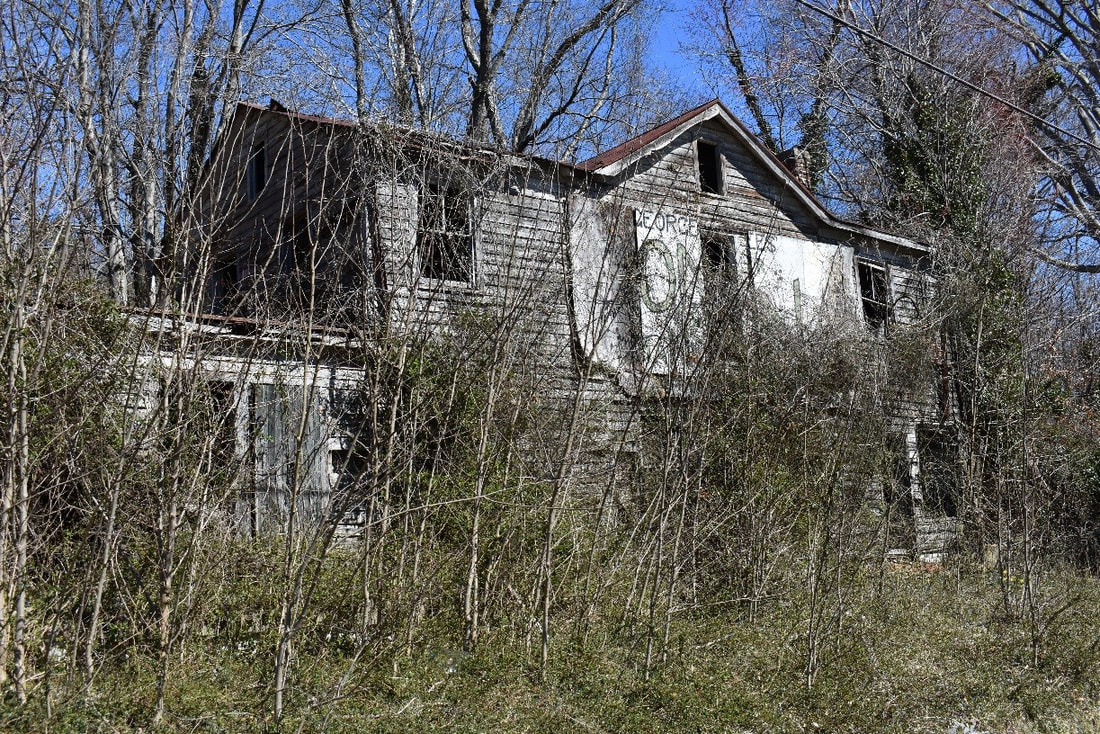
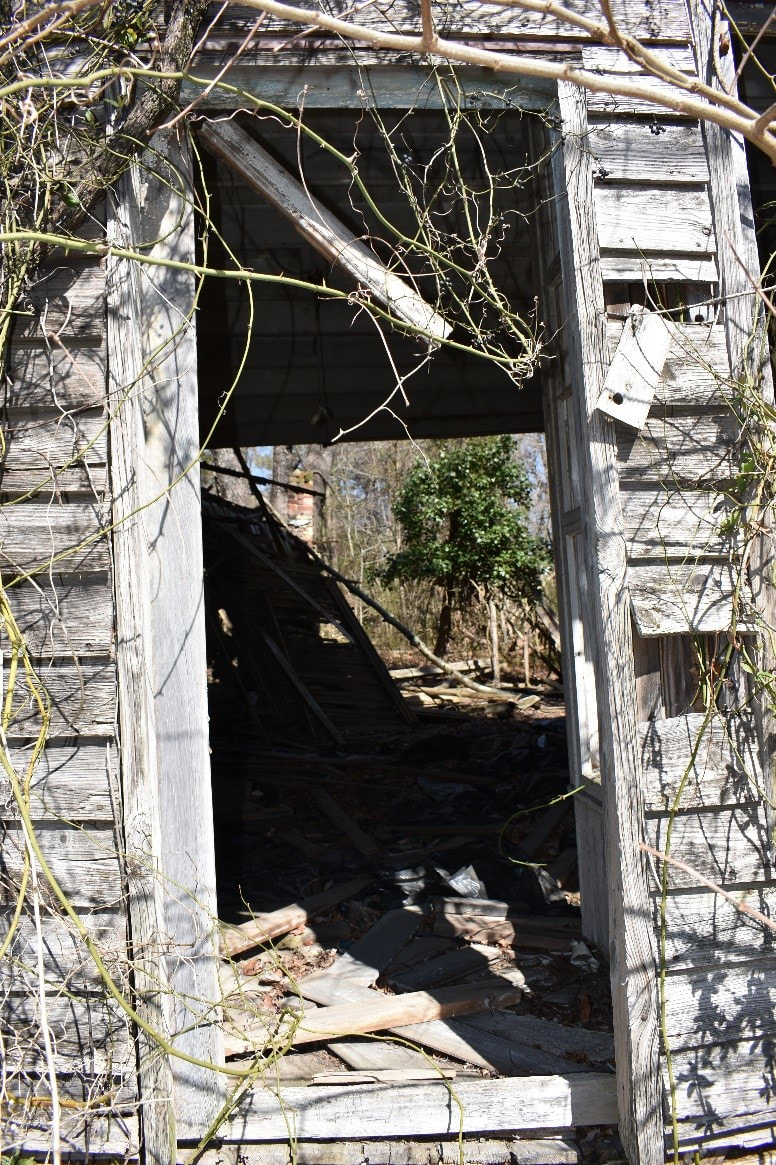






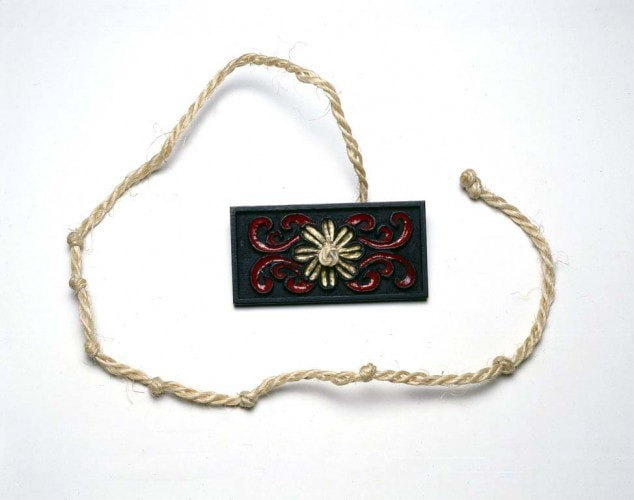






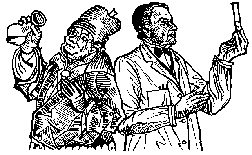
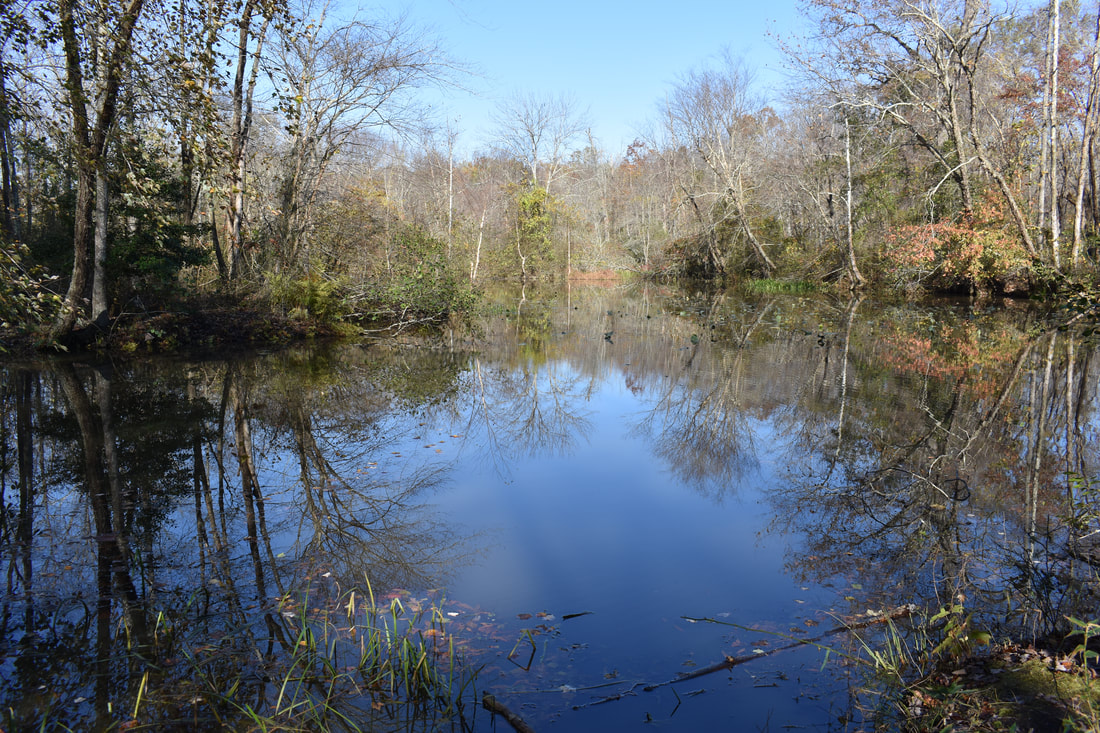

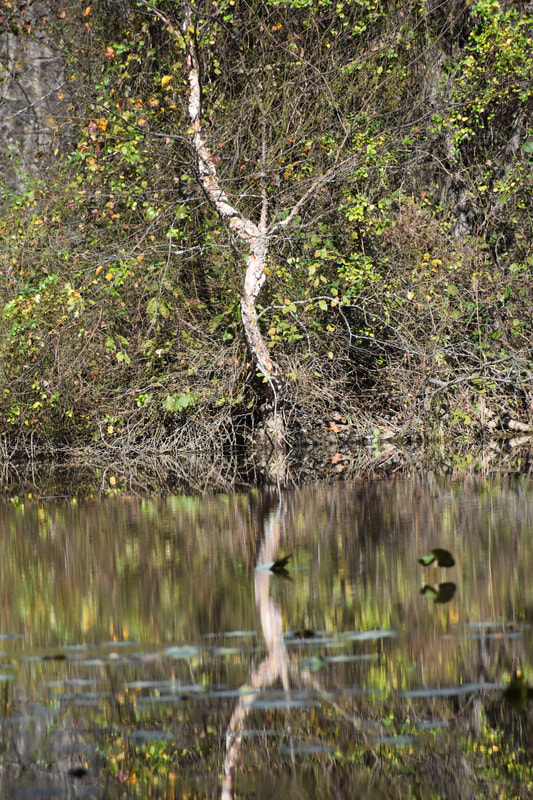
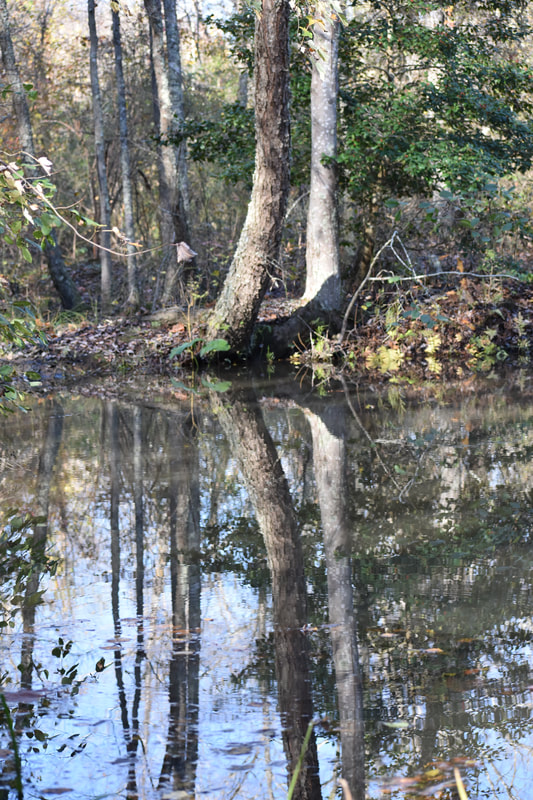
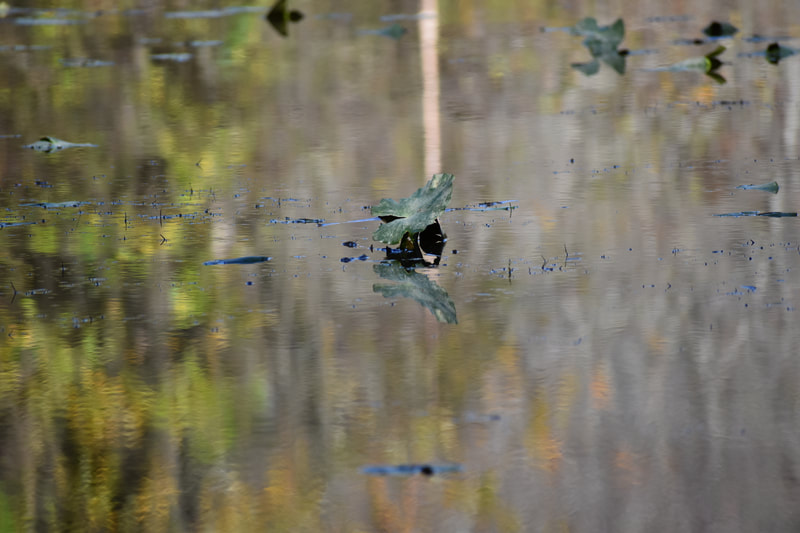
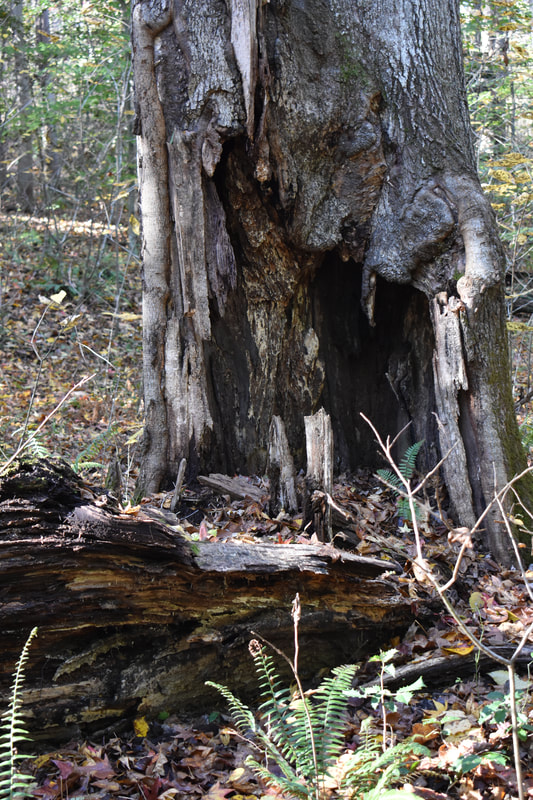
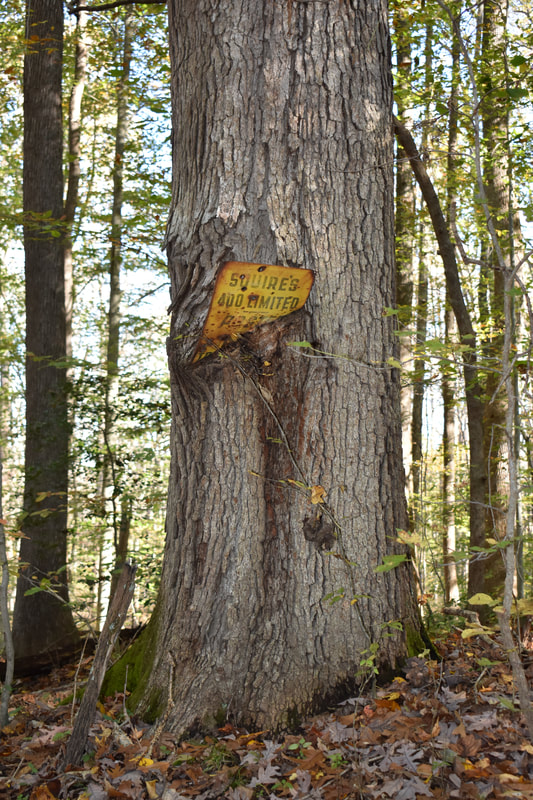
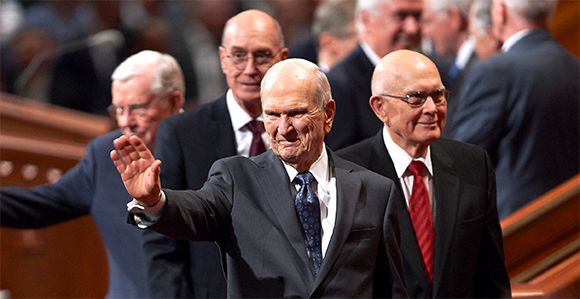
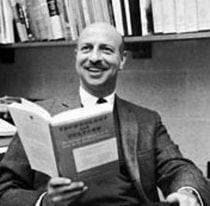
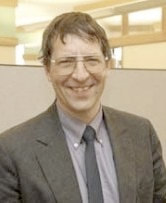



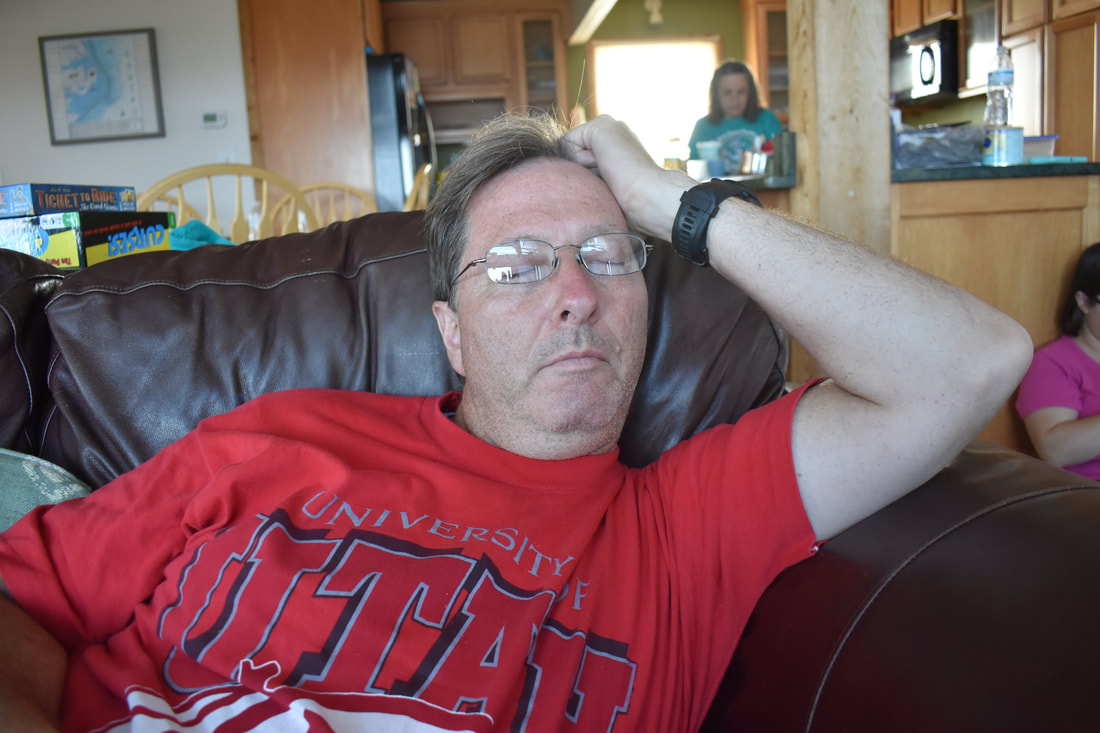
 RSS Feed
RSS Feed